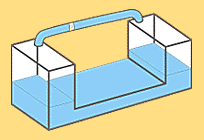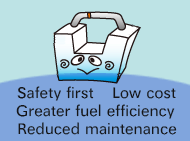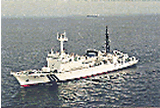IMC designs and sells anti-rolling tanks.
Sale content relating to anti-rolling tanks
- Design and sale of variable cycle type anti-rolling tanks
- Design and sale of fixed cycle type anti-rolling tanks
- Bench test for various anti-rolling tanks
- Consultant for anti-rolling tanks
What is an Anti-rolling Tank?

|
An anti-rolling tank is a device (tank) designed with the aim of reducing a ship’s horizontal rolling. The ship’s horizontal rolling is reduced by transferring the water or other fluid in the tank in the direction opposite to the rolling moment generated by waves. |
Benefits/Advantages
 
|
Voyages are more comfortable due to the reduced* horizontal rolling angle. * In general, the reduction factor (rolling reduction factor) of the horizontal rolling angle is 50%. Improves safety in stormy weather. The anti-rolling tank halves the horizontal rolling angle, therefore is beneficial in improving efficiency and quality of offshore tasks such as research and observation, as well as fishing vessel tasks, and makes it possible to perform such offshore tasks safely even during stormy weather. Low cost/reduced maintenance IMC’s anti-rolling tank is less expensive to install than other similar devices. The structure is simple, therefore maintenance costs can be minimized. |
Lead-up to Development
 The First-even Installation of a Variable Cycle Type Anti-Rolling Tank “Takuyo” |
A free surface type anti-rolling tank was developed in 1880, followed by the current U-tube ART developed by H. Frahm. In Japan, JFE Engineering and the University of Tokyo’s Professor Motora engaged in joint research to equip the patrol ship “Shikine” with Japan’s first anti-rolling tank in 1963. In 1983, JFE developed the variable cycle type anti-rolling tank and installed the first one on the survey ship, Takuyo. |
